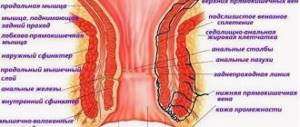- January 6, 2020
- Gastroenterology
- Aetner Aetner
Minerals, proteins, carbohydrates, fats, water and vitamins are the main sources of energy necessary for the functioning of the body, coming from food. Life activity consists of ensuring metabolism, maintaining optimal body temperature, and the functioning of organs and muscles throughout the day. The absorption of nutrients in the body occurs through the process of digestion.
Nutrition as the basis of life
Digestion includes mechanical (grinding) and chemical processing. Grinding occurs primarily in the oral cavity. A more complex process is chemical breakdown (hydrolysis). Starting in the mouth, it travels further to the stomach and intestines. Next we will look at this process in more detail.
After processing in the mouth, food is formed into a food bolus and, through the larynx and esophagus, moves on to the next stage of the “digestive conveyor” - into the stomach. Nutrients resulting from chemical breakdown penetrate the lining of the intestine (through the apical part of the cells that cover the inside of the intestine). Then they enter the blood, lymph and, passing through the portal vein of the liver, are delivered to all cells of the body.
The structure of the digestive system
To understand what digestion is, it is necessary to consider the structure and functions of the digestive system.
It consists of organs and departments:
- oral cavity and salivary glands;
- pharynx;
- esophagus;
- stomach;
- small intestine;
- colon;
- liver;
- pancreas.
The listed organs are structurally interconnected and represent a kind of tube, 7–9 meters long. But the organs are laid out so compactly that with the help of loops and bends they are located from the oral cavity to the anus.
The main function of the digestive process is to digest food and gradually process it in the body to form nutrients that are absorbed into the lymph and blood.
But besides this, digestion performs a number of other important tasks:
- motor or motor is responsible for grinding food, mixing with the secretions of the digestive glands and further movement through the gastrointestinal tract;
- secretory ensures the breakdown of nutritional components into mucous membranes, electrolytes, monomers and final metabolic products;
- absorption promotes the movement of nutrients from the tract cavity into the blood and lymph;
- protective consists of creating barriers using the mucous membrane;
- excretory removes toxic substances and foreign bodies from the body;
- endocrine produces biologically active substances to regulate digestive functions;
- Vitamin-forming ensures the production of vitamins B and K.
Digestive functions include sensory, motor, secretory and absorption. Among non-digestive tasks, scientists distinguish protective, metabolic, excretory and endocrine.
Types of digestion
Let's consider the types of digestion regarding the origin of hydrolysis enzymes:
- own digestion - occurs with the participation of enzymes formed in the body;
- symbiont - occurs with the participation of enzymes of the microflora living in the gastrointestinal tract;
- autolytic - with the participation of enzymes that come with food.
In adults, the main role is played by their own digestion. And in newborns it is autolytic, occurring due to those enzymes that come with mother's milk.
Depending on the place where hydrolysis takes place:
- intracellular
- extracellular: cavity and contact parietal.
Cavity digestion occurs in many parts of the gastrointestinal tract with varying intensity. The glands of the digestive system produce juices: the oral cavity - saliva, the stomach - an aqueous solution of hydrochloric acid, the liver - bile, and so on. It has been noted that the acidity of digested food depends on its distance to the walls of the stomach.
Hormones that affect digestion
In addition to the main sections of the gastrointestinal tract, the quality and speed of the digestion process are influenced by biologically active substances.
| Name | Which department are they in? | Function |
| Gastroenteropancreatic endocrine system | endocrine system | produces peptide hormones |
| Gastrin | pyloric region | increased secretion of gastric juice, pepsin, bicarbonates and mucus, inhibition of gastric emptying, increased production of prostaglandin E |
| Secretin | small intestine | increased stimulation of bile production, increased alkali in pancreatic juice, provides up to 80% of bicarbonate secretion |
| Cholecystokinin | duodenum, proximal jejunum | stimulation of sphincter of Oddi relaxation, increased bile flow, increased pancreatic secretion |
| Somastostatin | pancreas, hypothalamus | decreased secretion of insulin, glucagon, gastrin |
As we see, the digestion process in the human body is a complex system, without which human life is impossible. Proper absorption of food contributes to the quality of the body. Each organ that makes up the gastrointestinal tract plays an important role. To maintain health, it is necessary to adhere to the principles of rational nutrition and eliminate bad habits. Then the mechanisms will work like clockwork.
- What medications to take for gastritis of the stomach
- Which test for Helicobacter pylori is the most informative?
- Which doctor is responsible for the intestines?
- Stomach hurts after eating banana
The structure of the stomach and its position in the body
The stomach is located under the diaphragm and ribs on the left side, in front of the duodenum, being a widened section of the food pipe in the form of a stocking (horn) with a massive muscular layer on the outside and a mucous membrane on the inside.
The mucous membrane contains glands. The glands of the stomach are located in the depths of the mucous membrane. They are multicellular, simple, tubular, sometimes branching. There are the following types of glands: intrinsic, pyloric, cardiac. There are more glands of its own; they are located in the body and at the bottom of the stomach. They consist of main, parietal and accessory cells. The glands are sources of mucus, enzymes and hydrochloric acid.
The stomach communicates with the esophagus through the cardiac opening, and with the duodenum through a special valve - the pylorus.
The size of the stomach depends on its filling, on the person’s physique, as well as on the quality of the food that is broken down in the stomach. A stomach filled to the middle reaches 24-26 cm, and an empty stomach reaches 18-20 cm. The stomach of an adult can hold about three liters of liquid.
In the stomach there is an entrance to the cardiac, adjacent part. The top of the stomach is called the fornix, the junction with the duodenum is called the pylorus (pylorus), and the adjacent part is called the pylorus. The stomach also has two surfaces (anterior and posterior) and two uneven edges: upper and lower. The main part of the stomach is called the body. The body and the pyloric part are separated by the sphincter.
The mucous membrane is a component of the stomach wall, and includes the following components: submucosa, muscularis tunic, serosa. The mucous membrane of the stomach is covered by a single-layer cylindrical epithelium, forming many multidirectional folds: longitudinal, transverse and oblique.
Where the stomach meets the duodenum, there is a ring-shaped fold-flap (pylorus). This fold, when the sphincter (pylorus) contracts, separates the stomach and intestines. On the mucous membrane there are small elevations - gastric fields, on the surface of which there are depressions (gastric pits). These depressions are the mouths for the gastric juice secreted by the glands for processing food. Deeper than the mucous membrane lies a developed submucosa, which has dense vascular and nerve plexuses.
What happens in the stomach and what is broken down in it is discussed further.
Digestive organs
The alimentary canal is a tube that runs throughout the body. The canal wall consists of three layers: outer, middle and inner.
The outer layer (serous membrane) is formed by connective tissue that separates the digestive tube from surrounding tissues and organs.
The middle layer (muscular layer) in the upper parts of the digestive tube (oral cavity, pharynx, upper part of the esophagus) is represented by striated muscle tissue, and in the lower parts - smooth muscle tissue. Most often, the muscles are located in two layers - circular and longitudinal. Thanks to the contraction of the muscular membrane, food moves through the digestive canal.
The inner layer (mucosa) is lined with epithelium. It contains numerous glands that secrete mucus and digestive juices. In addition to small glands, there are large glands (salivary, liver, pancreas) lying outside the digestive canal and communicating with them through their ducts. The following sections are distinguished in the digestive canal: oral cavity, pharynx, esophagus, stomach, small and large intestines.
Diagram of the digestive tract as part of the digestive system:
- Salivary glands
- Parotid gland
- Submandibular gland
- Sublingual gland
- Oral cavity
- Pharynx
- Language
- Esophagus
- Pancreas
- Stomach
- Pancreatic duct
- Liver
- Gallbladder
- Duodenum
- Common bile duct
- Colon
- Transverse colon
- Ascending colon
- Descending colon
- Ileum (small intestine)
- Cecum
- Appendix
- Rectum
- Anal hole
Processes occurring in the stomach
People often ask, what breaks down in the stomach? The stomach is a container in which the food eaten is mixed and digested by gastric juice. Thus, nutrients are broken down in the stomach cavity.
The empty stomach returns to its original size. Gastric juice stops secreting, and its remains turn from acid to neutral liquid.
The stomach performs the following functions: secretory, motor, absorption, excretory (excretion of substances), endocrine (formation of the hormones gastrin and histamine), homeostatic (regulation of pH acidity). In addition, the stomach is involved in hematopoiesis (production of internal Castle factor, a protein necessary for the absorption of vitamin B12). But does this give a complete understanding of what is broken down in the stomach? Let's continue looking for the answer in the next section.
How are proteins and carbohydrates broken down?
Gastric juice is released reflexively when eating food. Glands are involved in the process of its production. Hydrochloric acid is involved in the breakdown of almost all substances that make up food, because it has high acidity. It makes proteins loose and accessible to destruction by enzymes. Juice enzymes are involved in the further breakdown of proteins into molecules. Protein substances are not absorbed in the stomach; they penetrate through the intestinal mucosa.
Carbohydrates begin to be broken down in the mouth, so they are digested in a short time, approximately 40 minutes. They are destroyed under the influence of salivary enzymes (amylase and maltase) and hydrochloric acid. The final breakdown of carbohydrates, like proteins, occurs in the intestines.
Fats are the worst to break down. They are not completely digested in the stomach, but are chemically processed using the enzyme lipase.
Digestion in the stomach
A lot of food enters the stomach, where it remains for 5 - 10 hours. The time food spends there varies depending on whether it is rich in proteins, carbohydrates or fats. The absorption of nutrients in the stomach is very low. Only some monosaccharides, amino acids, water and minerals penetrate through its mucous membrane. Mechanical processing of food is carried out thanks to the motor function of the stomach, and chemical processing is carried out by special enzymes. Small food masses moistened with saliva and stomach juice make up chyme - a liquid or semi-liquid suspension. So we figured out what breaks down in the stomach. Now let's look at how this happens.
Digestion
Once in the body, food products undergo mechanical changes - they are crushed, moistened, split into simpler compounds, dissolved in water and absorbed. The set of processes by which nutrients from the environment pass into the blood is called digestion.
Enzymes play a huge role in the digestion process - biologically active protein substances that catalyze (accelerate) chemical reactions. During digestion processes, they catalyze reactions of hydrolytic breakdown of nutrients, but do not themselves change.
Main properties of enzymes:
- specificity of action - each enzyme breaks down nutrients only of a certain group (proteins, fats or carbohydrates) and does not break down others;
- act only in a certain chemical environment - some in alkaline, others in acidic;
- enzymes are most active at body temperature, and at a temperature of 70–100ºС they are destroyed;
- a small amount of enzyme can break down a large mass of organic matter.
Motor function of the stomach
A full stomach looks like a bag, one side turning into a cone. The smooth muscles of the gastric walls are characterized by automatic spontaneous movements. Mechanical and chemical stimuli force the stomach to move. His muscles are very plastic and tense when stretched. The food is strongly compressed by the muscles and collected at the bottom. Water flows to the bottom of the stomach whenever it is full. While mixing, the food bolus is saturated with digestive juice and moves towards the exit. When filled with food, the stomach contracts from the beginning to the middle, and then to the pylorus.
A full stomach is characterized by the following mobility:
(1) peristalsis;
(2) movements of the pyloric part and the terminal portion of the muscles;
(3) reduction in the volume of the body and lower part of the stomach.
The fundus relaxes, due to which the volume of the stomach increases without increasing the pressure in it (“receptive relaxation”). Prolonged contraction (digestion) is replaced by active relaxation. Without food, the stomach collapses and does not form a cavity. Periodic contractions begin after a period of rest after an hour and a half, and last half an hour to an hour, this is called fasting periodic activity.
Perestaltic waves begin within about an hour after finishing a meal, near the cardiac pacemaker. Wave speed is 1 cm/s, duration is 1.5 s, coverage is 1-2 cm of the stomach wall. In the pyloric region the wave lasts 4-6 per minute and accelerates to 3-4 cm/s.
If you eat during a quiet period, the stomach begins to contract immediately, and if you eat during the hungry phase, contractions will occur later, after three to ten minutes. First, weak waves rise, beginning to mix food with digestive juice and move it in small portions. Meanwhile, the digestion of carbohydrate compounds by saliva continues in the bolus.
Weak contractions become stronger, causing food to mix and move more actively. At the same time, the food does not move too quickly - the wave of movements throws it back, making possible high-quality mixing with digestive juice. The mixed food moves to the far section, displacing the food bolus from the depths. In the antrum, the wave subsides and tonic tension occurs.
From the pylorus, through propulsive contractions, the food bolus moves to the duodenum. The frequency of propulsive waves is six to seven per minute. They do not always coincide with peristaltic ones. During the digestion of food, the longitudinal and circular muscles move together, without differing in shape or frequency.
Small intestine
The small intestine is the longest part of the digestive tube, reaching 6–7 meters in an adult. It consists of the duodenum, jejunum and ileum.
The excretory ducts of two large digestive glands - the pancreas and liver - open into the initial section of the small intestine - the duodenum. Here the most intensive digestion of food gruel occurs, which is exposed to the action of three digestive juices: pancreatic, bile and intestinal.
The pancreas is located behind the stomach. It distinguishes between the apex, body and tail. The apex of the gland is surrounded in a horseshoe shape by the duodenum, and the tail is adjacent to the spleen.
Gland cells produce pancreatic juice (pancreatic). It contains enzymes that act on proteins, fats and carbohydrates. The enzyme trypsin breaks down proteins into amino acids, but is active only in the presence of the intestinal enzyme enterokinase. Lipase breaks down fats into glycerol and fatty acids. Its activity increases sharply under the influence of bile produced in the liver and entering the duodenum. Under the influence of amylase and maltose in pancreatic juice, most food carbohydrates are broken down into glucose. All pancreatic juice enzymes are active only in an alkaline environment.
In the small intestine, food gruel undergoes not only chemical, but also mechanical processing. Thanks to the pendulum-like movements of the intestine (alternate lengthening and shortening), it mixes with digestive juices and liquefies. Peristaltic movements of the intestines cause contents to move towards the large intestine.
Gastric mucus and its place in the digestive process
All cells of the gastric mucosa produce an essential component - gastric mucus (mucin). The most prominent in this matter are mukocytes - accessory cells. The surface epithelium helps them in this. Mucin, leaving through the apical membrane, creates a layer of mucus that covers the stomach and protects it from threatening external forces. Bicarbonate is also formed there. The interaction of hydrochloric acid and peptides threatens the mucous membrane with autolysis, but it is protected by the mucoso-bicarbonate barrier formed due to the interaction of mucin and bicarbonate.
When the pH is below 5.0, the mucus loses its viscosity and leaves the mucous membrane, forming flake-like lumps in the gastric juice. Hydrogen ions and proteinases are removed along with this mucus. This protects the mucous membrane and activates digestion in the stomach. Myalomucins, which are part of mucus, protect against viruses and take part in the formation of HC1. Parietal cells produce glycoproteins necessary for the absorption of vitamin B and the prevention of iron deficiency anemia.
Next, we will look at what enzymes are in the stomach and how substances are broken down in it.
Features of the large intestine
The stages of human digestion in the oral cavity, where the grinding of food for further processing begins, are important processes. Products interact with saliva, microorganisms and enzymes, after which the taste of food appears and starchy substances are broken down into sugars. The processing process involves teeth and tongue.
The remains of undigested food enter the large intestine. They stay in it for 10 – 15 hours. During this period, water absorption and microbial metabolization of nutrients occur. Thanks to the microflora of the large intestine, dietary fiber, which is classified as indigestible biochemical components, is destroyed in this section.
Among them are:
- wax,
- resin,
- gum,
- fiber,
- lignin,
- hemicellulose.
Feces are formed in the large intestine. They consist of residues that have not been digested during digestion, mucus, microbes and dead cells of the mucous membrane.
Gastric juice enzymes
The digestive juice of the stomach has bactericidal properties. In its pure form it is colorless, and it is characterized by an acidic pH reaction, which is caused by hydrochloric acid.
Thanks to the enzyme protease, gastric juice breaks down proteins, and with the help of lipase, fats are broken down by juice in the stomach. The main enzymatic process of the stomach should be indicated - the primary hydrolysis of proteins, during which albumoses, peptins and a small amount of amino acids are formed. Gastric juice exhibits proteolytic activity over a wide pH range, the optimum of which varies between 1.5-2.0 and 3.2-4.0.
Gastric juice contains seven types of pepsins, thanks to which beneficial substances are broken down in the human stomach.
Pepsins are formed by pepsinogens in the cells of the gastric glands, and pepsinogen is activated in the stomach. And then proteins begin to break down in the stomach. When the environment is sufficiently active, pepsin destroys proteins by breaking their bonds created by phenylamine, tyrosine, tryptophan and other amino acids. Thus, the protein molecule is broken down into peptones, proteases and peptides. Thanks to pepsin, gelatinase hydrolyzes the main protein substances, and most importantly, collagen, the basis of connective tissue. Therefore, proteins begin to break down in the stomach. There are no pepsins in the antrum, but gastrixin is present in all parts of the stomach.
So, now it is clear what substances are broken down in the stomach.
On the topic: methodological developments, presentations and notes
The test is carried out after studying the “Digestion” section.
Methodological development. Final test in biology on the topic “Digestion”.
Final test in biology on the topic “Digestion”.
Here are 4 versions of tests with 5 questions each on the topic “Digestion”, 8th grade.
Material for tested control based on the results of the 3rd quarter in 8th grade. Includes questions in the Unified State Exam format.
Material for final testing on the topic “Digestion”, grade 8.
To consolidate the material, I offer tests on the topic “Digestion”.
Gastric juice contains proteases that break down proteins and lipase that breaks down fats.
Proteases are pepsins (one of them is formed in the main cells of the fundic glands, the other in the cells of the pyloric glands), gelatinase and chymosin. Pepsins break down proteins only in an acidic reaction (at a pH below 4). There are two pH levels at which pepsins are most active: 1.5-2.4 and 3.4-3.9. At a pH above 5.0, the effect of pepsins stops.
These enzymes are isolated in crystalline form. Pepsins
break down proteins into polypeptides of varying degrees of complexity. Pepsins are secreted by gastric juice cells in an inactive form - in the form of so-called pepsinogens, which are converted into active enzymes - pepsins under the influence of hydrochloric acid of gastric juice. Activation of pepsinogen consists in the fact that a polypeptide containing arginine is cleaved from it and is a pepsin paralyzer.
Gelatinase
breaks down gelatin, a protein found in connective tissue. Chymosin, as well as pepsin, cause milk curdling, i.e., the transition of the water-soluble caseinogen protein contained in milk into casein protein, which is insoluble in the presence of calcium ions. In gastric digestion, an important role is played by hydrochloric acid of gastric juice.
Fats are broken down into glycerol and fatty acids under the influence of lipase. In adults, gastric lipase is of little importance in digestion, since it acts only on emulsified fats.
In the stomach, the breakdown of polysaccharides that began in the oral cavity continues under the influence of salivary enzymes. The duration and intensity of their action depend on how soon the food is mixed with gastric juice, the hydrochloric acid of which stops the action of ptyalin and salivary maltase.
Hydrochloric acid slowly penetrates into the inner layers of the food taken, and the newly received food takes a middle position, as if wedged into the previously taken food. In these inner layers, the breakdown of polysaccharides under the influence of saliva may continue for some time. In humans, a significant part of starch is broken down by salivary ptyalin in the stomach.
Innervation of the stomach
From two parts of the nervous system, sympathetic and parasympathetic, afferent nerves stretch to the stomach. Parasympathetic nerves are part of the vagus nerve. Sympathetic postganglionic fibers constitute the sympathetic nerves.
The secretion of digestive juice in the stomach consists of stages: complex reflex, and gastric with intestinal, combined into neurohumoral.
The complex reflex stage follows the pattern of conditioned and unconditioned reflexes.
When you see tasty and beautiful food, when you smell it, the secretion of juice begins in the stomach, which prepares the stomach for digestion. This juice is released conditionally reflexively. I. P. Pavlov called him fiery, or “appetizing.”
When food enters the oral cavity and pharynx, the secretion of the glands is reflexively excited, this is an unconditioned reflex. The nerve impulse runs along sensory nerve fibers from the oral cavity to the medulla oblongata, from there, through the central parasympathetic neurons and efferent fibers of the vagus nerve, to the glands of the stomach. The gastric mucosa experiences pressure, this irritates the mechanoreceptors and they report this to the central nervous system. The nervous system, through the vagus nerve, instructs the glands to act and produce secretions.
In the gastric phase, secretion is determined both by a reflex mechanism and chemically, influencing through the blood. Mechanical irritation with food in the area of the pylorus leads to the formation of first the inactive substance progastrin, and then the active substance gastrin, which is transported by the blood to the glands and stimulates their activity.
Gastrin is helped by histamine secreted in the mucous membrane. Histamine stimulates parietal cells that secrete hydrochloric acid.
Digested food enters the intestines and the intestinal phase begins, when substances that also stimulate the stomach glands humorally begin to be absorbed into the blood. In the third phase, the glands are stimulated with the help of the hormone enterogastrin. The second and third phase can last about 4-6 hours, depending on what food is present.
Action of digestive secretions
The initial process of food processing begins in the oral cavity.
After eating delicious food, chewing thoroughly and for a long time causes the food eaten to be crushed:
- Under the influence of this, an alkaline secretion of the salivary glands is formed, and a food bolus is formed. It is moistened and subjected to primary treatment with the salivary enzyme amylase.
- The nutrients then move through the esophagus, and the digestive process takes place in the stomach over several hours. For this chemical conveyor to work correctly, prerequisites are necessary: the secretion by numerous glands of the most important hydrochloric acid of the correct concentration, the necessary fiber, essential enzymes, and beneficial bacteria.
- Gastric juice abundantly permeates the food that enters the stomach. The secretory function of the gastrointestinal tract is one of the main ones. It promotes the secretion of digestive juices. They contain enzymes that ensure the active functioning of the digestive tract.
- Conditions for the intermediate breakdown of food entering the esophagus are created as a result of the secretion of hydrochloric acid in the stomach. It breaks down food proteins into polypeptides - small fragments.
- This chemical process prepares proteins for final breakdown and absorption of substances in the small intestine.
- The quality of absorption of substances and the speed of food processing are completely dependent on the form and composition of the food.
- Gastric secretion is caused by eating vegetable and meat soups. Rapid breakdown and absorption is typical for protein and carbohydrate products. To digest fatty foods, rice and semolina porridge, the body requires much more effort and time.
- Provides an antiseptic effect.
Return to contents
The effect of various foods on gastric secretion
Different foods have different effects on the secretory activity of the stomach, depending on the quality, quantity and diet. An excellent example is the reaction of gastric juice secretion described by I.P. Pavlov in response to the intake of food high in carbohydrates (bread), proteins (meat), and fats (milk).
The most active secretion is caused by protein foods. After eating meat, the peak production of gastric juice occurs in the second hour. Constant consumption of meat increases gastric secretion and increases acidity in response to any food.
The weakest stimulant of secretion is food rich in carbohydrates (bread). The strongest reaction to eating bread develops in the first hour, after which it sharply decreases and remains at a low level for quite a long time. On a carbohydrate diet, acidity decreases.
Milk fats act in two stages: inhibitory and excitatory. In this regard, the strongest reaction takes a long time to develop - only by the third hour. Increased activity of the juice occurs at the exciting stage. The strength of the juice is lower than when eating meat, and higher than when eating carbohydrates.
The more food in the stomach, the stronger its activity. Before the food bolus passes into the duodenum, the activity of the gastric glands decreases.
Characteristics of organ function
It should be noted the invaluable role of the liver, which produces bile during the digestion process. The work of the small intestine would not be complete without bile, as it helps emulsify fats, activate lipases and absorb triglycerides into the stomach. Bile stimulates perilstatics, enhances the absorption of proteins and carbohydrates, increases hydrolysis and promotes the inactivation of pepsin.
The process of digesting food is carried out by activating the functions of the gastrointestinal tract.
Digestion is regulated by the body fulfilling its purposes. Mechanical processing of food in the stomach occurs in several stages due to its passage through different parts of the gastric cavity. The digestion process is accompanied by the activation of such stomach functions as:
- Secretory. It involves the production of gastric juice, which contains many minerals and acids that can speed up the process of breaking down food. The composition of the substance depends on what food enters the stomach. An adult excretes up to 2 liters of fluid during the day; in children the norm is lower.
- Cumulative and motor. The residence time of products in the stomach is 3 hours. After this, the products are mixed with the produced substance and accumulated to a certain amount. Then comes the evacuation of food into the large intestine. This function is provided by the muscle layer.
- Suction. The developed microvascular circuit of the stomach carries nutrients to other internal organs.
- Excretory. When this function is activated, the decomposition products formed in the human stomach after digestion are removed.
- Antianemic. In the parietal cells, internal production occurs, which is responsible for the body’s absorption of vitamin B12, necessary for the creation of blood.
- Protective barrier. Enzymes and acids found in the organ prevent the effects of toxins on the body.
- Endocrine. Special cells produce hormonal compounds necessary for the proper functioning of the gastric glands, gallbladder and circulatory system.
Other factors
Mental mood and stress have a great influence on secretion. For example, irritation and rage increase secretion, while fear, melancholy and depression weaken it.
Gastric juice may also be released between meals. This can be facilitated by such irritants as the circumstances in which food is taken, the ingestion of saliva, and the flow of digestive juices.
There are factors that cause spontaneous gastric secretion. They can be abscesses, burns. Spontaneous secretion also occurs in surgical patients after surgery due to increased production of histamine from tissue breakdown products and their release from tissues. In the bloodstream, histamine reaches the glands of the stomach, causing their activity.








